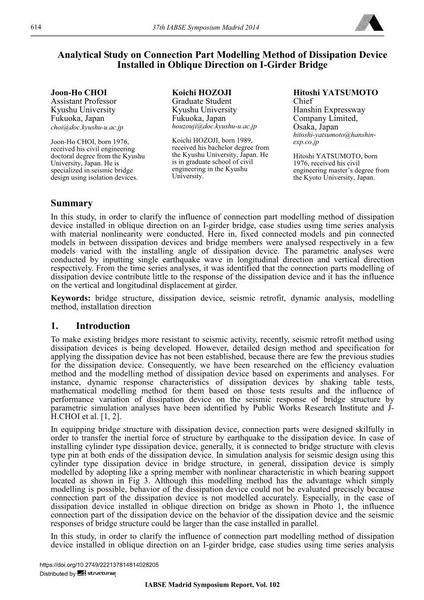Analytical Study on Connection Part Modelling Method of Dissipation Device Installed in Oblique Direction on I-Girder Bridge

|
|
|||||||||||
Bibliografische Angaben
| Autor(en): |
Joon-Ho Choi
Koichi Hozoji Hitoshi Yatsumoto |
||||
|---|---|---|---|---|---|
| Medium: | Tagungsbeitrag | ||||
| Sprache(n): | Englisch | ||||
| Tagung: | IABSE Symposium: Engineering for Progress, Nature and People, Madrid, Spain, 3-5 September 2014 | ||||
| Veröffentlicht in: | IABSE Symposium Madrid 2014 | ||||
|
|||||
| Seite(n): | 614-620 | ||||
| Anzahl der Seiten (im PDF): | 7 | ||||
| Jahr: | 2014 | ||||
| DOI: | 10.2749/222137814814028205 | ||||
| Abstrakt: |
In this study, in order to clarify the influence of connection part modelling method of dissipation device installed in oblique direction on an I-girder bridge, case studies using time series analysis with material nonlinearity were conducted. Here in, fixed connected models and pin connected models in between dissipation devices and bridge members were analysed respectively in a few models varied with the installing angle of dissipation device. The parametric analyses were conducted by inputting single earthquake wave in longitudinal direction and vertical direction respectively. From the time series analyses, it was identified that the connection parts modelling of dissipation device contribute little to the response of the dissipation device and it has the influence on the vertical and longitudinal displacement at girder. |
||||
| Stichwörter: |
dynamische Berechnung Erdbebennachbemessung
|
||||
